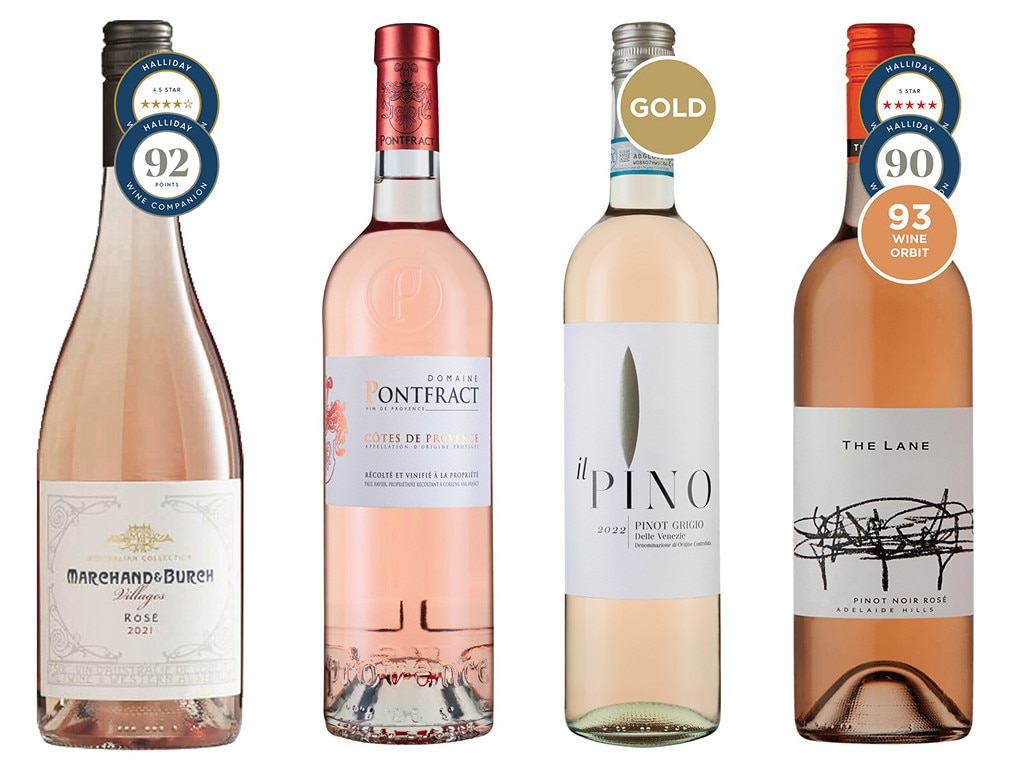Australian wine exports slide 2pc in 2023
Cost of living pressures and the rise of sobriety among younger consumers in western nations has impacted the alcohol sector and seen a slide in Australian wine exports.
Business
Don't miss out on the headlines from Business. Followed categories will be added to My News.
Cost of living pressures have forced drinkers from New York to London to spend less on Australian wine and also to pick up cheaper wine when they visit a bottle shop or restaurant, with the nation’s wine exports slipping 2 per cent in 2023.
There is also a growing trend of sobriety among western consumers, as research indicates a negative shift in spending on alcoholic beverages, with all regions except Asia trending negative.
In Europe – which holds some of Australia’s largest and most important wine export markets – 15 regions saw a decline in the value of wine bought from Australia as a combination of a slowing economy, higher inflation and supply chain issues resulted in lower sales. It was a similar story in North America, where in the US and Canada wine exports slumped 7 per cent and 24 per cent respectively.

However, Asia provided a ray of hope for Australian winemakers where sales in Hong Kong boomed, up by 74 per cent in value, while sales into Singapore were up by 1 per cent. Australian wine is still locked out of the Chinese market thanks to crippling tariffs imposed on Australian imports in 2021, and there has always been a growing suspicion that keen Chinese drinkers could be sourcing their favourite Australian wine through Hong Kong.
But more generally, the Australian wine industry continues to face maturing markets in Europe and North America amid a global alcohol market that is softening.
Latest data released by Wine Australia reports that Australian wine exports declined by 2 per cent in value to $1.9bn and 3 per cent in volume to 607 million litres in the year to December 2023.
Although these export numbers are an improvement on those reported in the September 2023 report, the results were still well below long-term averages.
Wine Australia manager, market insights, Peter Bailey said that Europe and North America drove the reduction in export value over calendar 2023, declining by 7 and 12 per cent respectively.
“In Europe, exports to the top 15 markets declined in value as the region suffers through higher inflation rates than North America and Asia, as well as supply chain issues. This includes the UK, Australia’s largest export market by volume. Pleasingly, Australia’s exports to the UK grew in volume for the first time since mid-2021,” Mr Bailey said.
Along with economic pressures, disrupted supply chains and shipping issues had also pinched wine exports to Europe, Mr Bailey said. “If you look at Europe, there are some pretty tough supply chain issues at play as well. One is the increased cost of shipping, higher fuel costs, which is particularly impactful in Europe, where inflation has been much higher than other regions.
“On top of that, you’ve got labour shortages in the trucking sector, which has impacted on transporting wine. And it’s also been more difficult to transport wine through Europe due to the conflicts in the region.”
Mr Bailey said industrial disputes at Australian ports had also delayed shipping and likely impacted exports for 2023.
The decline in exports to Europe and North America resulted in their share of export value dropping to 29 and 27 per cent, respectively.
Australian wine exports to New Zealand fell by 2 per cent in volume, and down 7 per cent by volume in Germany.
Some the decline was being driven by a shift to more healthy living and loweri alcohol consumption.
“It is a long-term factor, but we are looking at wine consumption declining over a period of time particularly in more mature markets like the US and UK, and in the domestic market,” Mr Bailey said. “Consumers are more conscious about their health and that has seen alcohol consumption fall globally.”
Countering this decline was a better performance in Asia, where that region’s share of export value has grown to 37 per cent. “Hong Kong and Singapore were stand out destinations for Australian wine in Asia,” Mr Bailey said.
“Further, the number of exporters to Hong Kong also grew – up 138 export businesses to a total of 531 in 2023. Hong Kong and Singapore are key trading hubs in the Asian region and, as such, some of the wine is on-shipped to other markets,” Mr Bailey said.
Mr Bailey said Wine Australia believed much of the wine exported to Hong Kong was then sent to other countries.
More Coverage
Originally published as Australian wine exports slide 2pc in 2023





